White Gravy
One of the things my First Reader loves to cook is a white milk gravy. No sausage, he insists, it's better without it. His mother taught him to make it, his grandmother made it, and each generation has complained that their gravy was never as good as the one that came before it. How far back it goes, is anyone's guess.
You don't get much simpler and plainer than this recipe. From the back hills of Kentucky where my man was brought up, poor didn't mean you couldn't eat well.

Making this into a recipe was a little more difficult. When I told the First Reader I planned to blog the gravy recipe, he looked shocked. I don't have one! he protested. I pointed out that we'd do the same thing I did with his coleslaw. He'd make it, and I'd watch, photograph, and take notes. I'd better put on real pants, he commented and I laughed at him, pointing out I'd be shooting with close-in focus, only his hands. Just in case, he said, and went to change out of his sleeping pants.
White Milk Gravy
1/3-1/2 cup bacon grease. Enough to cover the bottom of the pan you're using and have a bit of depth to it. We were using a 12" cast-iron skillet and the rest of the ingredients are proportioned to that. This is enough gravy for four, six if you're serving other things.
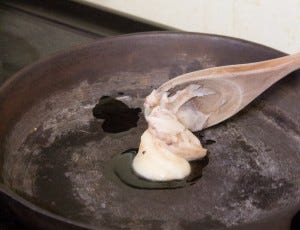
He added a bit more grease once this glob melted down.
1 tbsp salt. The First Reader commented that he puts in enough sodium to meet the whole family's maximum daily requirement. It's a lot. But it's good. And it must go into the hot grease and be mixed in and heated. If you don't the gravy won't turn out quite right.
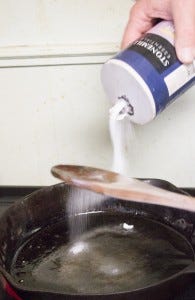
Salt goes in the grease. A lot of salt.
1/3-1/2 c white flour. This needs to be enough to thicken the milk, but not so much you have to cut your gravy with a knife. Measuring this is more about paying attention to the texture of the roux you've just made. Thick enough so when you stir it around, it doesn't just cover up the bottom of the pan again.
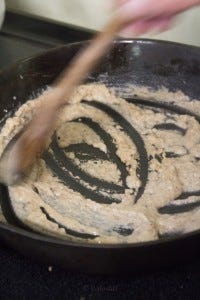
This is where the roux is thick enough, but not too thick.
1 quart whole milk. Stir in, keeping the tip of the wooden spoon in contact with the bottom of the pan. Don't stop stirring, or it will burn. Don't stir too fast or it will slop. When it's reached the desired consistency, take it off the heat. The First Reader pours it into a bowl (I like a mix-and-pour with a spout for this) so it stops cooking in the hot pan.
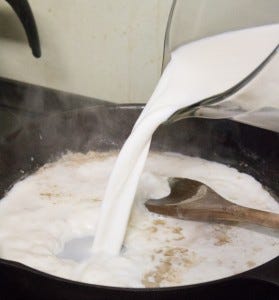
Just keep stirring, stirring...
Pour over fresh hot biscuits. He grew up with biscuits from a can, and that's his comfort food. I'll blog my scratch recipe another time. Serve with sliced tomatoes.
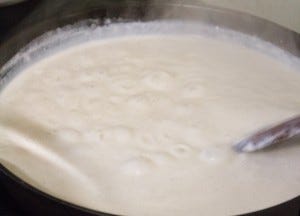
It's done when the bubbles pop and leave a crater...
The First Reader was dubious about photography on this meal. It's white on white. I took this as a challenge, and along the way of choosing sides and the blue bowls for contrast, I highlighted the fact that this is good old-fashioned American food. Warm, filling, comfort food. I garnished it with bacon crumbles and snipped wild onions from our yard.
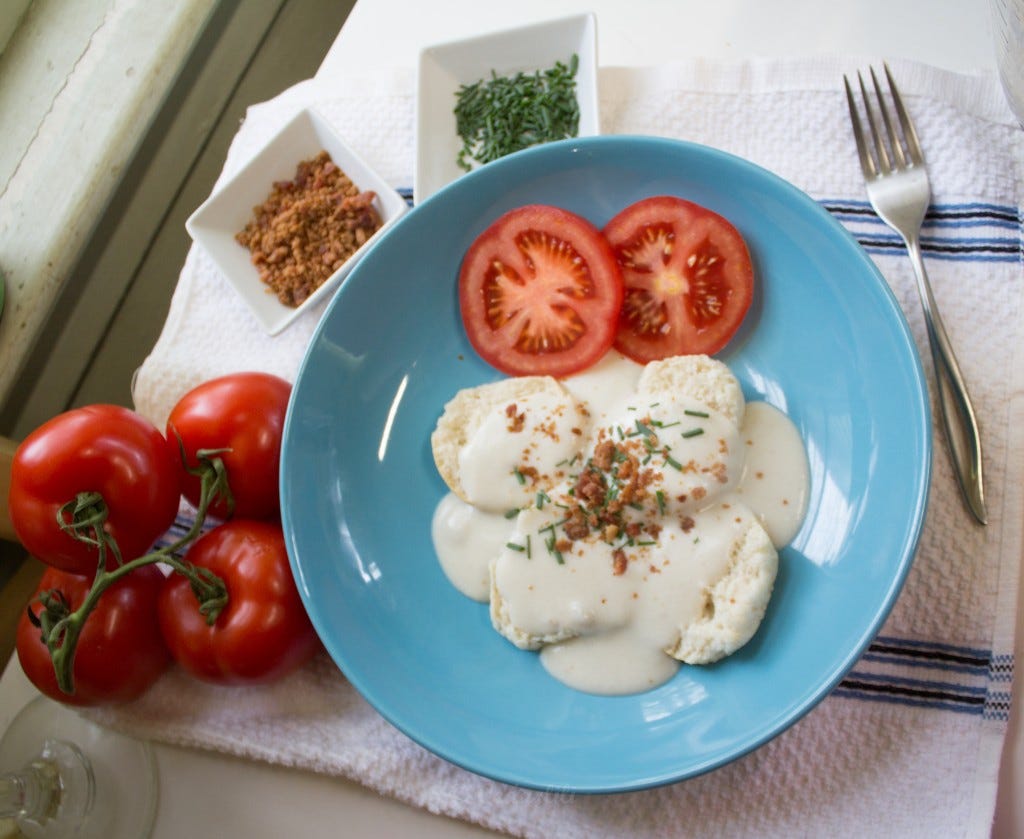
Sunday Brunch, as elegant and delicious as anything you would want.
The First Reader says you have to keep trying it and screwing it up until you learn how. It's a technique that probably isn't teachable through a written-down recipe. Even in person it's hard to teach. I spent a lot of time, I'd watched my mother do it, and I spent a lot of time as a single man making gravy I couldn't eat. Until I got it to the point where I could eat it.




